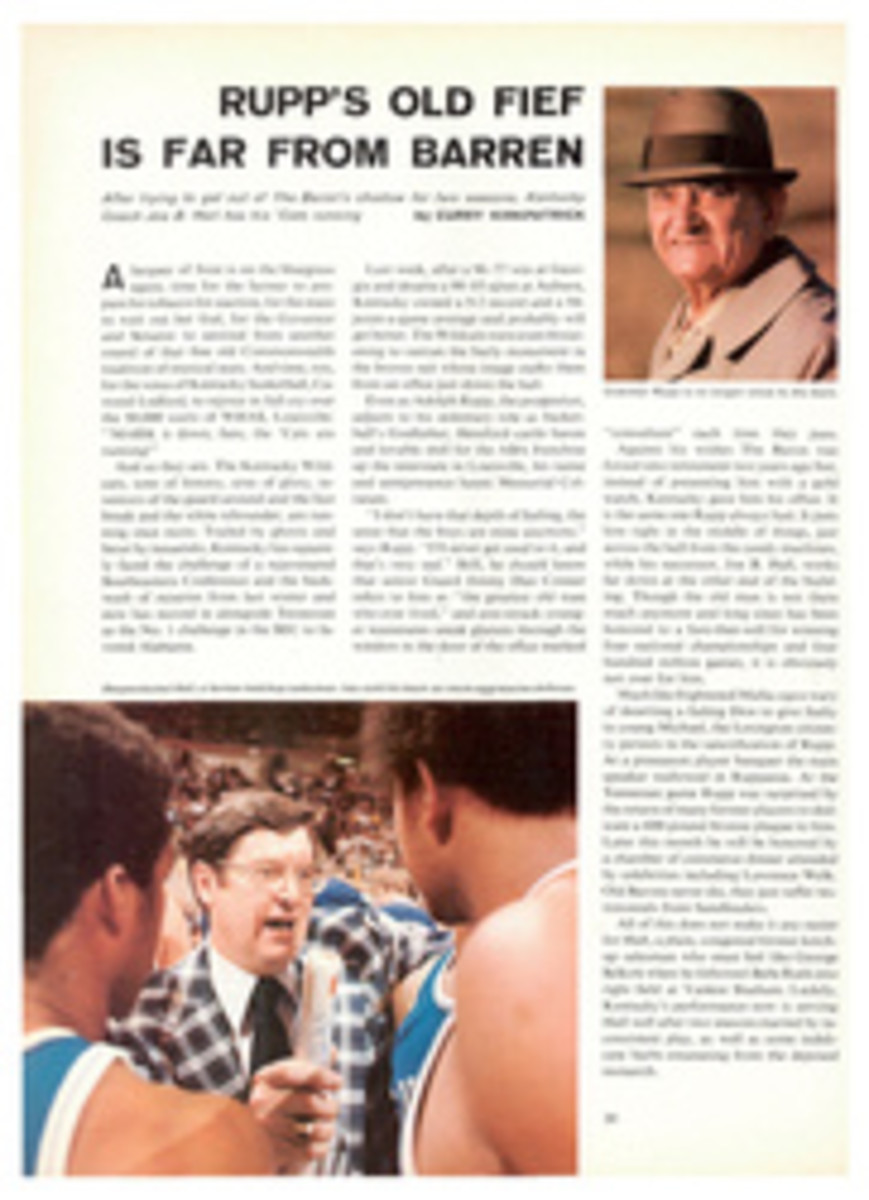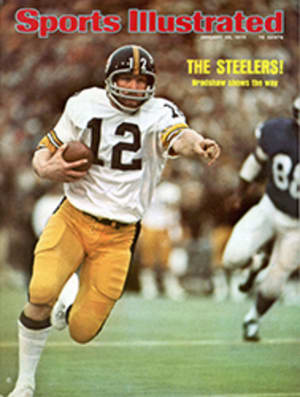
No slowdown in Detroit
For the Detroit Pistons all was normal early last week, which meant there weren't enough healthy bodies to make up two practice teams. Coach Ray Scott had called for drills on Monday and Tuesday, but without his two All-Stars, Center Bob Lanier (wounded knee) and Guard Dave Bing (attending a funeral). And the wife of reserve Forward Howard Porter was seriously ill, and so he was spending the two days with her in New York. They were all back on Wednesday when Milwaukee came to town, but the visiting Bucks added some speed to an attack that has been less than quick and stopped the Pistons 102-92.
When it was over, Scott was saddened and you might have imagined from the way he spoke that this team was in dire trouble. "This isn't a YMCA league," he said softly. "You just don't show up one night a week and expect to win. You've got to work at it. And, for one reason or another—travel, injuries, personal problems—we haven't been able to do that. Not for the last eight days. And in this league that's a long time."
Scott might have added: especially when you reside in the NBA's Midwest Division, where Detroit and Milwaukee, and Chicago and Kansas City-Omaha make their homes. That foursome spends so much time assaulting each other they have hardly enough muscle left to go out and mug the rest of the league. Scott might also have mentioned that his Pistons were on top of the division. Through last Sunday's games, they led with a 24-18 record, with the Bulls, the Bucks and the Kings in hot pursuit. Just four games separated Detroit from last-place Kansas City-Omaha.
"Last year proved that it's the toughest division in the NBA," says Chicago Coach Dick Motta. "And I think a lot of teams in the other divisions are looking at our schedule and the way we are killing each other—and then come in and pick up the pieces. Sometimes."
This season, for example, Chicago plays Milwaukee eight times, Detroit nine times and Kansas City-Omaha nine times. That's 26 games within a division that leads the NBA in defense. And bruises. Kansas City-Omaha, which is the only one of the four to remain relatively healthy, leads the intradivisional play with a 10-6 record. Milwaukee is 8-6, Detroit 5-5 and Chicago 4-10.
"This is the toughest division I've ever played in," says Chicago Center Nate Thurmond, who came to the Bulls from Golden State and is not having one of his better seasons. "With Abdul-Jabbar and Lanier, the Midwest has two of the three best centers in the NBA, and all those games against that pair makes life a lot tougher than it was on the West Coast."
And the division keeps getting tougher. After a sluggish start, Detroit has won eight of its last nine games, and 13 of 21 since Dec. 4. With Abdul-Jabbar operating at full bore once again, the Bucks are overcoming their horrendous start and by last Sunday were almost at the .500 mark. And Chicago has shown signs of emerging from its offensive lethargy. Since losing twice to Detroit at the end of December, the Bulls have won five of six. And only once did they fail to score at least 100 points.
Only Kansas City-Omaha, which had a surprisingly strong start, has shown signs of flagging as the season moves into its second half. The Kings have dropped six of their last seven.
"It's been a weird year," said Ray Scott. "For a while there I thought we were going to end up in a four-way tie." Then he grinned, partly because by now it was Friday. After Wednesday's loss to the Bucks, his Pistons had gone to Milwaukee and that night had been superb in winning 89-81. "We've finally got it together," said Scott.
When the season opened the consensus was that Detroit would sprint ahead of its Midwest rivals. Why not? With Abdul-Jabbar out with a broken hand, no one expected much from Milwaukee—and got it. Chicago was opening with Bob Love and Norm Van Lier holding out, which is like sending Patton into battle without his tanks. And even with Sam Lacey blossoming into a first-rate NBA center, plus Nate Archibald healthy once more, little was expected from the Kings.
But the Pistons had problems of their own, although some of them were not quite visible. Bing and Don Adams, the brilliant defensive forward, had been preseason holdouts, and for Adams, at best a slow starter, the delay was costly. And Scott sensed that the holdouts had disrupted the team unity that by the end of last season had lifted the Pistons out of perennial mediocrity.
Then came the injuries. Bing hurt a foot and had to have half of his right big toenail removed. For the first two weeks of the season he wore a size 14 shoe on his right foot, where normally he wears a 12. Later he sprained an ankle. Two weeks into the season Adams injured an Achilles tendon, missed eight games and then needed another month to play himself back into shape.
Then almost the entire forward corps collapsed. Willie Norwood started the first seven games and was shooting at 54% when he complained of extreme pain in his left knee. A few days later he had an operation to remove a bone spur and still is out. Curtis Rowe came down with near pneumonia, lost 15 pounds but continued to play, though he was not as effective.
After 20 games the Pistons had won but 10. They bumped along, finally reaching 16-17, taking turns with the Bulls and the Kings in first place.
"That was enough," says Scott. "We thought in the beginning we could run and shoot. We found out we couldn't. And so we went back to the things we do best: tough defense and more patience on offense. That's what won for us last year."
The move suited the 6'11", 260-pound Lanier, who was having a fine year and at that point became even better. In an attempt to determine the NBA's most complete player, statistics were fed into a computer. They included total scoring, assists, rebounds, blocked shots and field-goal scoring. Lanier came out No. 1. After 40 games he was averaging 24.7 points and playing tremendous defense. And he was doing it with a left knee wracked by tendinitis and arthritis. Every few days the knee has to be drained, and after every game he packs it in ice to reduce the pain and swelling.
"He's our savior," says Rowe.
"Our healer," says Adams.
"Our leader," says Bing.
"Listen to those guys," says Lanier. "They think I'm Moses."
Returning to their old style of play and healthy again, the Pistons ran off six straight victories. In November they played 14 games and gave up an average of 102.4 points per game. In 21 games since then they have allowed but 91.8 points a game and lowered their season average to 97.4, second best in the NBA. Chicago is first, giving up just 93.2, with Milwaukee ranked No. 4 and Kansas City-Omaha No. 9. As a unit, the Midwest foursome is allowing only 97.8 points a game, the only division under 100.
The big surprise in the Midwest has been Kansas City-Omaha, which won only 33 games all last year and was only 4-16 in its division. The return of Tiny Archibald has been of great help, but the biggest factor in the Kings' surge has been the emergence of the 6'10", 230-pound Lacey as one of the NBA's better centers.
Heading into the All-Star game, where he was to play behind Abdul-Jabbar and Lanier, Lacey was leading the league in minutes played, in assists for a center and in defensive rebounds. Still, for some reason, people find it hard to admit that the four-year veteran is really that good.
The rap on Lacey is that he doesn't score enough. After the first 44 games he was averaging only 11.6 points.
"I always felt I could score more," he says, "but the last two years I've tried to play a more complete game. Everybody looks at the superstars, the guys who make 20 or more points a game. Now, really, there are only four or five real superstars in the league. Some centers are averaging up there but their shooting percentage is terrible. I don't call that being a superstar."
Under Phil Johnson, who took over the Kings in November 1973, Lacey is the hub of the offense. He has become expert at setting picks, and he screens and passes well—and still rebounds, steals and blocks shots.
"At the age of 26, Sam is one of the real keys to our future," says Johnson.
As for Milwaukee, before last week's Detroit series it figured it needed to win both games to prove it had finally got untracked.
"I don't know what's wrong," said Milwaukee Coach Larry Costello, "but we have not been playing as hard now that Kareem is back as we did when he was out."
Milwaukee also seems to be trying to win with a two-man offense. On Jan. 5, in a victory over Chicago, Abdul-Jabbar and Forward Bobby Dandridge scored 66 of the Bucks' 96 points. Two nights later, while losing a game to Kansas City-Omaha, the same pair scored 59 of the team's 99.
For last week's games with Detroit, Costello went to Gary Brokaw, the speedy rookie from Notre Dame, and he responded with 22 points in the opener. Abdul-Jabbar had 23, Dandridge 32 and Guard Jim Price 20. In Game Two, Brokaw started again, scored six quick points and injured his hip. After that, the Bucks were never really in it, although the Pistons had lost Bing with an ankle injury late in the first period.
Dandridge was furious after the loss. "There's something badly wrong with this team," he said. "We're not hungry enough. We go out there and sometimes we play like dogs. We're trying to set up plays and we should be running. We're going to have trouble beating anybody unless we start running as soon as we set a foot on the court."
In the Piston dressing room, Lanier was content. After the first game, a Detroit paper said that the Bucks had shown the Pistons who was "boss." The big center had been less than happy with the story.
A man came in and clapped Lanier on the shoulder. "Hey, Bob, what happened to the boss?"
"I don't know anything about bosses," said Lanier, who had just scored 29 points. He grinned broadly. "I just know who won the game."
PHOTO
LANIER (16) PICKS JIM PRICE BUT GOOD
PHOTO
LACEY IS FINALLY GAINING ATTENTION

